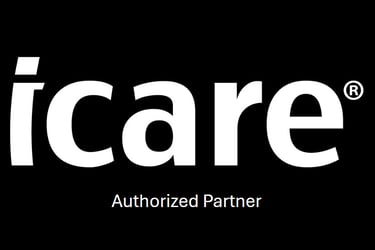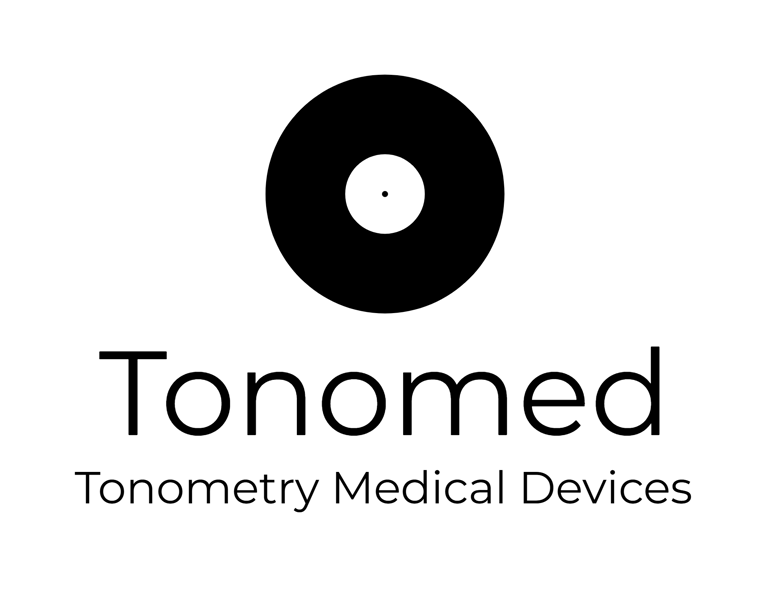Frequently asked questions
What is IOP and why is it important to track?
IOP refers to the fluid pressure within the eye (intraocular pressure). At times, your eye may produce too much fluid or not properly drain the fluid, which can lead to elevated pressure — a significant risk factor for glaucoma.
Elevated IOP is also the only modifiable risk factor for glaucoma. Hence, it’s important for anyone over 40 to undergo regular eye examinations, where your eye health practitioner will routinely measure your IOP.
What is the iCare HOME2?
The iCare HOME2 is a handheld, battery-operated tonometer — a device that measures your IOP. It is portable and designed to let you take your own IOP measurements conveniently at home, or on the go. You can use it standing up, sitting down or even lying down, wherever you choose. It works by bouncing a tiny, magnetized probe off the cornea and measuring the subsequent deceleration of that moving probe.
The tonometer is gentle, fast, and easy to use. You don’t need to write down your readings — the device stores your results digitally, which can be accessed from a secure online cloud account.
Is the iCare HOME2 safe to use?
Yes, the iCare HOME2 is safe to use*. It is TGA approved for use by patients at home, under rigorous testing. If you have any specific concerns, please consult with your eye care practitioner.
*when used according to its indications for use and in accordance with its labelling
If I have had eye surgery, can I still use the iCare HOME2?
Yes. Under normal circumstances, the iCare HOME2 can be used with no risk. However, if you have any concerns or questions, you should consult with your eye care practitioner.
What are the benefits of using iCare HOME2?
The iCare HOME2 lets you measure your IOP anytime and anywhere, creating a long-term picture of your eye pressure patterns and learning how your IOP varies. This valuable information will help your eye care practitioner to better understand your condition and develop more personalized treatment plans e.g. it may help to guide treatment decisions or medication changes.
Are the readings accurate?
The accuracy of the iCare HOME2 tonometer has been clinically tested and proven — it provides exactly the same technology that is available in professional eye clinics
Does it hurt when you take measurements?
No, taking measurements with the iCare HOME2 is completely painless, gentle and quick. There’s no need for anaesthesia or drops.
How many times do I need to take measurements and what is the target pressure?
According to your eye care practitioner’s recommendations, you usually measure 3-6 times a day. The first measurement is typically early in the morning and the last one is late at night before going to bed.
Every patient is unique, with individually customized target IOPs. The target pressure is a value based on the severity of disease, baseline level of untreated IOP, and the presence of risk factors for the development or progression of glaucoma.
Why does my measurement result change throughout the day?
It is normal for eye pressure to fluctuate throughout the day. Eye pressure is a constantly changing parameter, that can fluctuate 2-6 mmHg, at any given moment.
Glaucoma patients can additionally have fluctuations of greater than 10 mmHg.
IOP may also fluctuate due to body position, time of day, blood pressure, ocular perfusion pressure, stress or pain levels, water consumption, and more.
Since IOP values can vary between individuals greatly, it is always best to discuss it with your eye care practitioner.
Are there other factors that could affect my eye pressure?
People who engage in anaerobic exercise may hold their breath temporarily while straining — this can raise eye pressure and further increase the risk of developing glaucoma or worsening vision loss in people who have the disease.
Is it recommended to use the iCare HOME2 if I have low vision?
To determine if the tonometer is a viable option for you, it’s best to discuss this with us first. The great majority of patients (even with diminished vision) can use the iCare HOME2 independently, without difficulty. Please see the full list of contraindications further below.
Can I travel with my iCare HOME2?
Yes, you can take your iCare HOME2 tonometer with you wherever you go. The device is lightweight and comes with a custom-designed case.
Is the iCare HOME2 easy to use, do I need any instructions or guidance?
The iCare HOME2 tonometer is very easy to use — it comes with clear instructions and materials to get you started. You can also find numerous videos online, in multiple languages. If you are having any problems, please contact us, so that we can assist you further.
How do I share my results?
You can access your IOP data either through the tonometer’s screen or via the online cloud software. You can print and/or email the data from your iCare cloud account.
We recommend sharing the data in graph form, which enables easy observations of pressure spikes and fluctuations.
How should I care for the iCare HOME2?
Cleaning the iCare HOME2 is simple — if needed, just use a cloth or a dampened paper towel to wipe down the plastic surfaces.
The tonometer does not need calibration. Batteries and probe base should be replaced, only when needed.
How often do the batteries need changing?
The iCare HOME2 can take around 1,000 measurements before batteries need replacing.
The iCare HOME2 ONLY accepts 4 x 1.5 V, AA, non-rechargeable batteries, alkaline LR6.
How often should I change the probe?
The probes are intended for single use only. A single use is defined by a successful measurement of each eye. However, if the device is being used by a single patient only, it is considered clinically safe to utilize a probe for 5-6 measurements, across a 24-hour period. Additionally, if either eye is inflamed or infected, be sure to measure the healthy eye first and only utilize the probe once, do not re-use, in this case.
Why am I receiving an error message? What are the common causes for not obtaining a measurement?
The most common causes for not obtaining a reading and receiving an error message include:
Taking the measurement too far or too close to the eye.
The probe not being perpendicular to the eye.
The probe accidentally hitting the eyelid or eyelashes.
When any of these situations occur, the tonometer will display a message on the screen that will guide you to obtain a successful reading.
What do I do if the iCare HOME2 can’t recognize my eyes?
If the iCare HOME2 fails to recognize your eyes during the measurement, you can manually select your eye using the tonometer buttons after the measurement, and it will be accepted.
Are there any contraindications for using the iCare HOME2?
Patients with any of the following conditions should NOT be prescribed the iCare HOME2:
Active ocular infection including infectious conjunctivitis
Recent ocular trauma including corneal laceration or corneal/scleral perforation
Disabling arthritis or limited motor coordination affecting self-handling of the iCare HOME2
Blepharospasm
Nystagmus
Patients with the following conditions are generally not eligible for use of the iCare HOME2, since they have the potential to introduce unsafe conditions during use or to impair measurement acquisition:
Uncorrected near visual acuity of 20/200 or worse
Only one functional eye
Poor or eccentric fixation
Hearing impairment to the extent that the individual cannot hear and converse with others without an assistive aid and/or sign language
Dry eyes
Keratoconus
Microphthalmos
Buphthalmos
Cataract extraction within last 2 months
The safety and effectiveness of the HOME2 tonometer has not been evaluated for patients with:
High corneal astigmatism >3d
History of prior incisional glaucoma surgery or corneal surgery including corneal laser surgery
Corneal scarring
Central corneal thickness greater than 0.60mm or less than 0.50mm
Known history of difficulty in obtaining Goldmann IOP measurements or any factors that might contribute to inaccurate Goldmann IOP measurements (e.g. lid squeezing or tremor.
Where can I find more information or get more support with iCare HOME2?
To learn more about iCare HOME2, visit https://patients.icare-world.com/
For more glaucoma support, you can also visit:
https://glaucoma.org.au/i-have-glaucoma/sightwise
For anything else, please contact us at hello@tonomed.com.au
PLEASE NOTE: We are not responsible for interpreting IOP data nor providing any medical advice.
Do I still need to visit my eye care practitioner for check-ups?
The iCare HOME2 is a valuable adjunctive tool for patients treated for glaucoma and those monitored as glaucoma suspects.
However, it should be noted that:
Intraocular pressure measurement taken by this device at home is not a substitute for measurements obtained within an eye care clinic.
Normal and low intraocular pressures do not mean that someone does not have glaucoma. A large proportion of patients with glaucoma and glaucoma suspects in Australia have pressures in the normal range. Many people with glaucoma have never had high intraocular pressure readings.
Intraocular pressure is only one factor in glaucoma assessment and needs to be interpreted alongside all other aspects of the clinical examination.
Intraocular pressure measurements may fluctuate throughout the day, even in people without glaucoma and the results need to be interpreted by an eye care practitioner.
Intraocular pressure measured with the iCare HOME2 may also differ to the results of other devices used by your eye care practitioner.
This device is not a screening or diagnostic tool. The iCare HOME 2 should be used in conjunction with regular reviews by an ophthalmologist or optometrist.
Tonomed Australia NZ
ABN 14 374 115 010
hello@tonomed.com.au
Ph: 0415 184 469
© 2025. All rights reserved.
Use of this website is subject to the POLICIES AND Terms of Service, set out in the links above.


